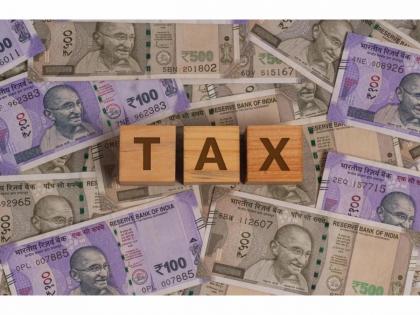How Much of Your NPS Contribution is Tax-Free Under the New Regime?
By ANI | Updated: August 27, 2025 17:00 IST2025-08-27T16:59:21+5:302025-08-27T17:00:05+5:30
PNN New Delhi [India], August 27: The National Pension System (NPS) has become one of the key options for ...

How Much of Your NPS Contribution is Tax-Free Under the New Regime?
PNN
New Delhi [India], August 27: The National Pension System (NPS) has become one of the key options for individuals in India to plan for retirement. While the framework remains the same, the tax treatment under the old and new regimes differs. Knowing how NPS contributions are taxed helps employees and employers use the system more effectively.
NPS in the New Tax Regime
Under the new tax regime, deductions on employee contributions are not available. This means that contributions made by employees under Section 80CCD(1) or the additional contribution under Section 80CCD(1B) cannot be claimed. These deductions are permitted only under the old regime.
The benefit that continues under the new regime relates to employer contributions. Contributions made by the employer to an employee's NPS account are still deductible under Section 80CCD(2). The deduction applies up to 14 % of Basic Salary plus Dearness Allowance in the new tax regime.
Summary of the new regime:
* Self-contributions: Not deductible under Sections 80CCD(1) and 80CCD(1B).
* Employer contributions: Deductible under Section 80CCD(2).
* Benefit calculated on Basic + DA.
NPS in the Old Tax Regime
The old regime provides broader tax relief for employees who contribute to NPS.
1. Self-contribution deductions
* Deduction allowed up to 10% of salary (Basic + DA) under Section 80CCD(1).
* The deduction falls within the overall ceiling under Section 80CCE.
* An additional deduction is allowed under Section 80CCD(1B), which sits above the ceiling under Section 80CCE.
2. Employer contribution deductions
* Contributions from the employer are eligible for deduction under Section 80CCD(2).
* In the private sector, the limit is based on 10% of salary (Basic + DA).
* In the case of central government contributions, the benefit extends up to 14% of salary.
Common Benefits of Old and New Tax Regimes
Despite differences in self-contribution deductions, some benefits remain available under both tax regimes.
* Lump sum at exit: Up to 60% of the total corpus withdrawn as a lump sum is exempt from income tax under Section 10(12A).
* Annuity purchase: A minimum of 40% of the corpus must be used to buy an annuity plan. The amount used for purchase is not taxed at the time of exit under Section 80CCD(5). However, annuity income received later is taxed as per applicable slab rates.
* GST exemption: Goods and Service Tax is not levied on annuity plans purchased through NPS on exit.
* Partial withdrawals: Withdrawals made under the permitted conditions are exempt under Section 10(12B).
Minimum Contributions to Operate NPS
For an NPS account to remain active, the minimum contributions are defined under two account types.
* Tier I Account (mandatory):
* Requires an initial contribution at the time of opening.
* Each subsequent transaction must meet the minimum contribution requirement.
* An annual total contribution is also mandatory to keep the account active.
* Tier II Account (voluntary):
* Needs an initial contribution to open.
* Subsequent transactions require a minimum amount per contribution.
* No compulsory annual minimum contribution is required.
Employer Contribution on Resignation Before 5 Years
If an employee resigns or leaves the organisation within five years, the employer contribution is not forfeited. The amount remains in the NPS account and continues to earn returns. However, withdrawal of this portion is not permitted until the employee turns 60, unless specific exit rules are met.
Conclusion
For employees under the new regime, only employer contributions bring tax benefits. Under the old regime, both employee and employer contributions qualify for deductions. This distinction explains why individuals choosing between the two tax systems should evaluate how they contribute to NPS and what works best for their situation.
Frequently Asked Questions
1. Can employees claim deductions on their own contributions under the new regime?
No, employee contributions are not deductible under the new tax regime.
2. What is the key benefit of NPS under the new tax regime?
Employer contributions continue to be deductible under Section 80CCD(2).
3. Are lump sum withdrawals at retirement tax-free?
Yes, up to 60% of the corpus withdrawn as a lump sum is exempt under Section 10(12A).
4. What happens to employer contributions if I leave my job within five years?
The contributions are not forfeited. They remain in your NPS account and earn returns, but can only be withdrawn after 60 years of age.
5. Is GST applicable when buying an annuity with NPS corpus?
No, Goods and Services Tax is not levied on annuity purchases made through NPS.
(ADVERTORIAL DISCLAIMER: The above press release has been provided by PNN.will not be responsible in any way for the content of the same)
Disclaimer: This post has been auto-published from an agency feed without any modifications to the text and has not been reviewed by an editor
Open in app